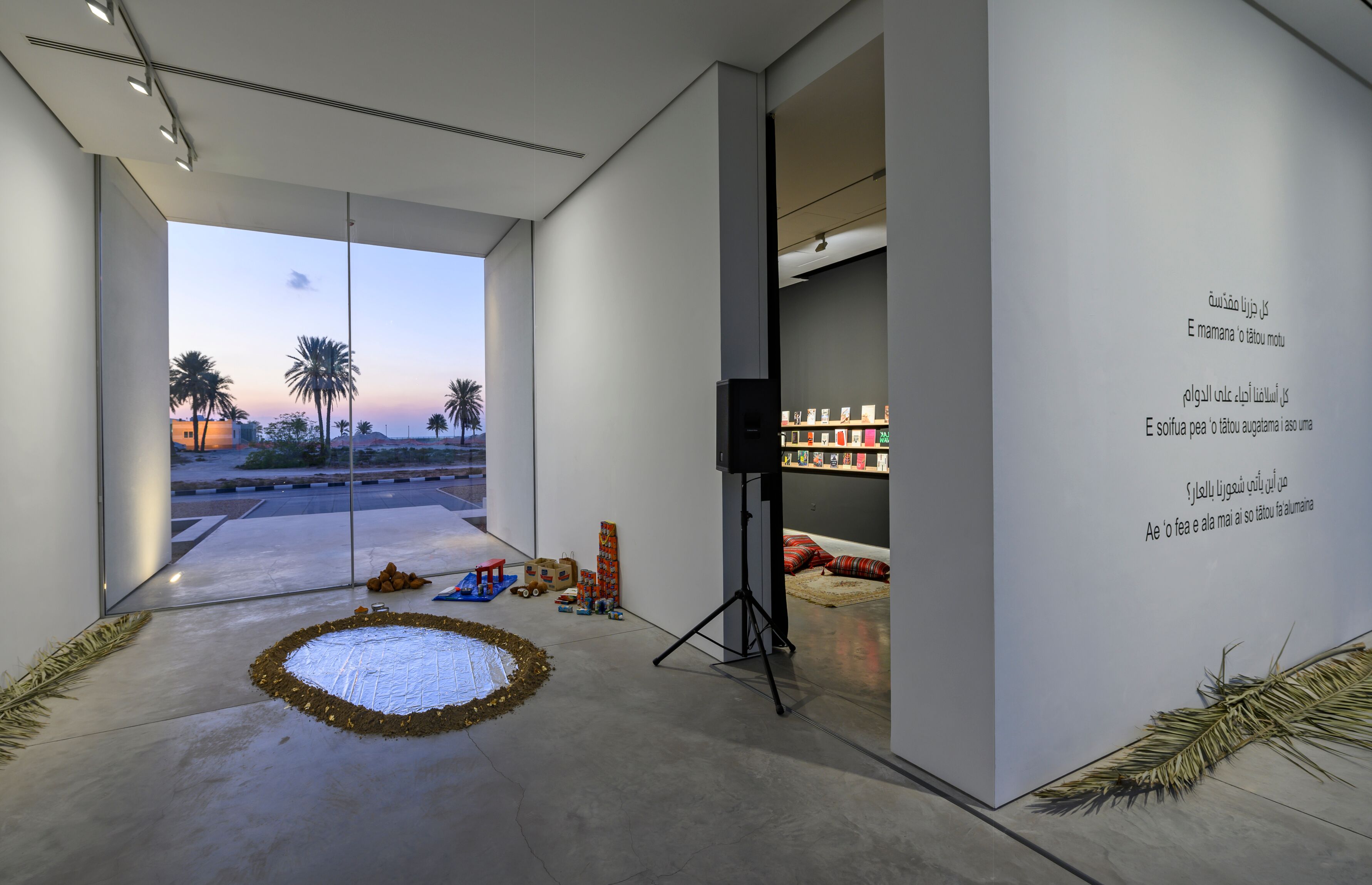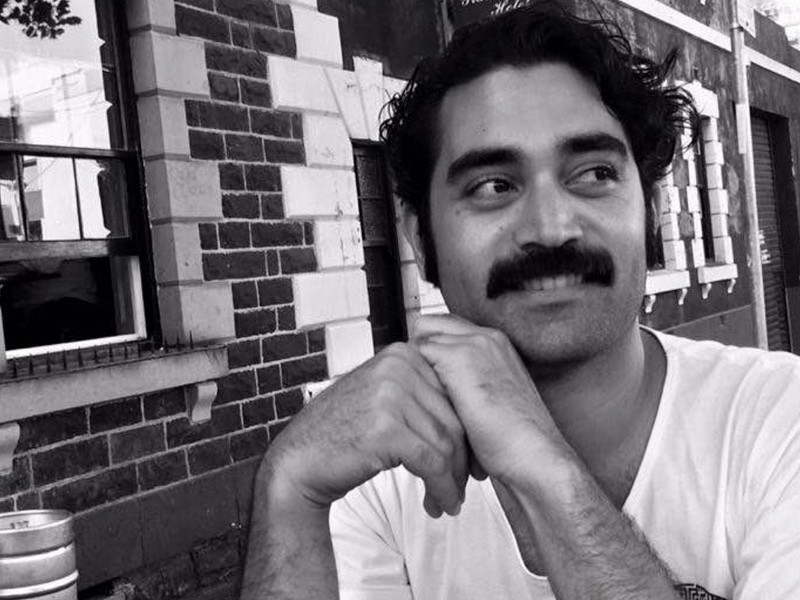Léuli Eshrāghi is drawn to the embodied teachings that Indigenous histories call into becoming as realisations of ancestral, Earth-centred ways of being and knowing. Beyond the performance of Indigeneity or difference for the contemporary art market, these markers of culture communicate to those outside of the gallery and are linked to relations of being beyond humanity.
In tagatanuʻu (2017–present), Eshrāghi creates an alofisā [ceremonial circle] dedicated to Sāmoan ancestors that is founded on vā [spatial, multidirectional relationships] with all kin. Ia* uses sand from Al Hamriyah in local recognition of the Great Ocean (Pacific Rim). During the SB14 opening week, the performance introduces the tala [history] of the eel Tuna, who becomes the young coconut tree in order to provide for his human lover Sina. The artist beckons ancestral time to question the exoticisation of history and the commodification of bodies, plants and medicines. Bodies have been exploited; hidden by shaming, spiritualities and sexualities; and extracted as labour for purposes of agriculture, tourism, the military and nuclear testing.
During the performance, walls surrounding the alofisā are marked in two lines of lega [turmeric], uliuli [charcoal] and sina [ochre]. Wrapped in emergency blankets, Eshrāghi explores social taboo and embodied shame, while offering a recitation as ia* handles saline seawater, electrolyte-rich coconut water, thick coconut milk and ceremonial turmeric water. These flowing waters of life conjure political, corporeal and militaristic references in coded and non-English language to reframe decolonial efforts through consideration of ecological balance and the genealogical reconnection of humanity through the eel-coconut tree ancestor Tuna and the maker ancestor Sina, who is connected by measina [fine weaving, literary works and the colour white] to ceremonial Sāmoan practice.
* he/her/they pronoun in Sāmoan



